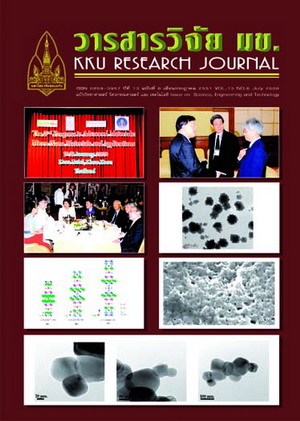Microcrystalline silicon oxide p-layer and its application to solar cell
Main Article Content
Abstract
As microcrystalline silicon oxide (μc-SiO) is reported to be more promising material than
microcrystalline silicon carbide for the application to solar cells, both of high efficiency amorphous (top cell)
and microcrystalline (bottom cell) silicon solar cells fabricated on tin oxide coated glass substrate have been
developed by using μc-SiO p-layer and buffer i-layer. High VHF frequency of 60 MHz and carbon dioxide
gas are used for their deposition. ZnO deposited by DC sputtering is coated on Asahi’s type U tin oxide in
order to promote the crystallization of the μc-SiO p-layer. It was found that the top cell with this novel
μc-SiO p-layer has higher cell efficiency than the one with normal SiO p-layer. Furthermore, the microcrystalline
bottom cell with novel μc-SiO p-layer and μc-SiO buffer layer has higher performance than the one with
normal c-Si p-layer. Up to now, an efficiency of more than 15% has been achieved with a-SiO/a-SiGe/
mc-Si tandem cell.


